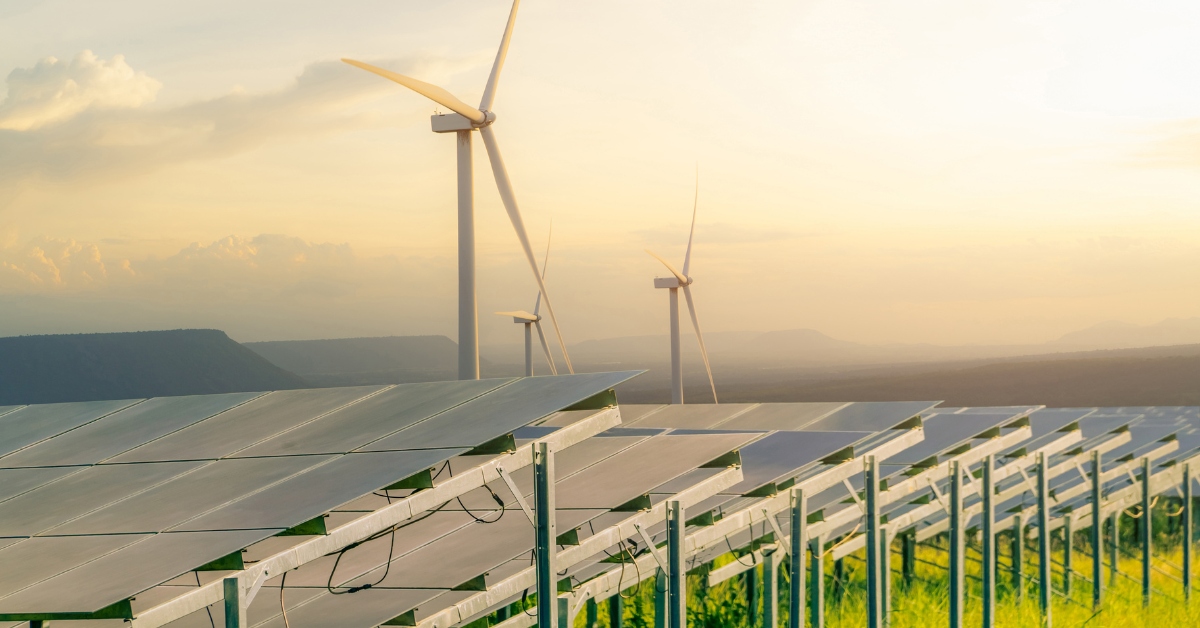
Artificial Intelligence is all around us and is making a significant impact on our lives. Within Sustainable Energy, AI is now harnessing the sun, the rain, and wind to provide us with incredible energy solutions that we would have never had access to previously.
We live in a world that thrives on overconsumption, from the clothes that we buy and the negative implications of fast fashion to the waste that we produce in our homes.
“There has been a global surge in the urgency to transition to clean, sustainable sources of power. However, designing, developing, optimizing and integrating these green energy sources into existing power infrastructure presents a unique set of challenges. As the share of renewable power increases in the electric grid, these challenges will continue to grow.” - Forbes
We wanted to showcase two examples of sustainable energy solutions, as well as the part AI has played in propelling these into the spotlight.
Using AI to predict energy usage according to weather patterns
Weather forecasting plays a huge part in how much energy we use. Whether it’s at a grassroots level and people heating or cooling their homes, through to multi-million dollar organisations looking at renewable energy solutions, AI has given us a world of opportunities. Most forecasting techniques relied on individual weather models, which didn’t give a comprehensive view of the availability of renewable energy.
Now, some organisations use AI and other technologies to test multiple variables to decipher whether renewable energy can be used. A great example of this is IBM’s program for the US Department of Energy’s SunShot Initiative.
The following extract has been paraphrased from EY.
The initiative combined self-learning weather models, datasets of historical weather data, real-time measurements from local weather stations, sensor networks and cloud information derived from satellite imagery and sky cameras. Their results yielded a 30% improvement in accuracy in solar forecasting, leading to gains on multiple fronts.
“Meanwhile, for grid operators, AI algorithms with vast amounts of weather data can ensure optimal use of power grids by adapting operations to the weather conditions at any time. More accurate short-term forecasting can result in better unit commitment and increased dispatch efficiency, thereby improving reliability and reducing operating reserves needed.
“Now, with AI, we can predict more accurately what renewables are likely to do, so we can control other power plants more accurately, like coal plants that take many hours to ramp up,” says James Kelloway, Energy Intelligence Manager at National Grid ESO.”
To read the full case study, click here.
Solar and AI
Solar power has been around for decades and is a palatable and accessible form of renewable energy, with many homes across the world using it.
At present, there are over 1.3 million homes in the UK that use solar power and 3.2 million homes in the USA. Despite these numbers still being considered low, there has been a steady increase in solar panel usage on an annual basis.
The relationship between solar and AI is an interesting one and is being largely propelled by the solar that is currently being used within people’s homes. The advancements, such as being able to detect and diagnose issues quicker to reduce maintenance needs and costs, through to real-time data so people can be informed of how their solar is performing, are all tangible ways in which AI is improving solar accessibility.
It isn’t just within homes and businesses, either. AI and solar also work hand in hand for solar energy for vehicles:
“AI might be used with solar-powered transportation to create self-driving and autonomous cars, greatly improving efficiency and safety. Artificial intelligence (AI) in solar-powered transportation systems can transform how we get around, providing a sustainable and environmentally friendly transportation system that aligns with global goals for lowering carbon emissions and mitigating climate change.
AI can assist in maximising the capture and use of solar energy, increasing vehicle economy, and lower pollutants. We can build a cleaner, more sustainable future with AI-powered solar transportation.” - Halcol Energy
These examples may sound far-fetched to some, but the reality is that AI is enabling the world of solar to advance far quicker than we could have ever imagined.
There are arguments that AI is dangerous, and some have criticised that AI isn’t always used for good. These opinions and worries are completely valid, as AI technology has demonstrated time and time again that it can have an insidious and damaging side. However, the future does look bright for the world of renewable energy, and AI is enabling it to thrive.
We are excited to see how the world of renewable energy and AI will continue to work harmoniously and produce impressive results!



